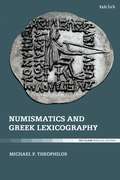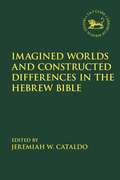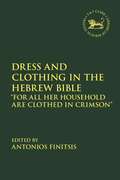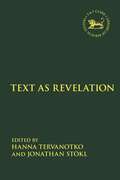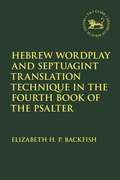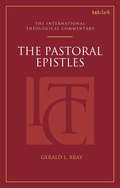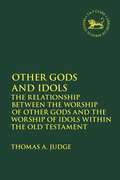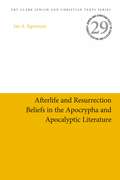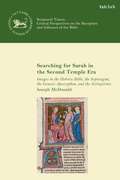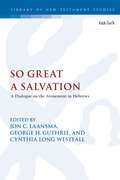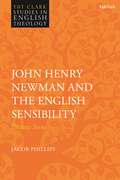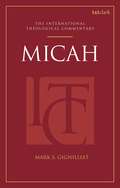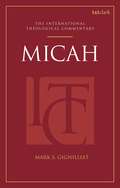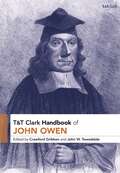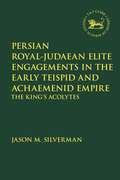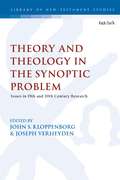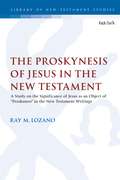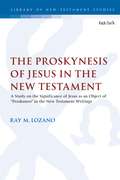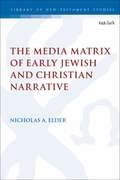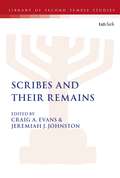- Table View
- List View
Numismatics and Greek Lexicography
by Michael P. TheophilosMichael P. Theophilos explores the fascinating variety of numismatic contributions to Greek lexicography, pertaining to lexicographic studies of the Second Temple period in general, and the New Testament in particular. Theophilos considers previous scholarly attempts to grapple with, and incorporate, critical numismatic material into the emerging discipline of Greek lexicography - including foundational work by F. Preisigke and E. Kiessling - before outlining his own methodological approach. Theophilos' then examines the resources available for engaging with the numismatic material, and presents a series of specific case studies throughout the New Testament material. His carefully annotated images of coins draw readers in to a greater understanding of the material culture of the Greco-Roman world, and how this impacted upon the Greek language and the New Testament.
Imagined Worlds and Constructed Differences in the Hebrew Bible (The Library of Hebrew Bible/Old Testament Studies #677)
by Jeremiah W. CataldoThe purpose of this volume is twofold: to introduce readers to the study of cultural memory and identity in relation to the Hebrew Bible, and to set up strategies for connecting studies of the historical contexts and literature of the Bible to parallel issues in the present day. The volume questions how we can better understand the divide between insider and outsider and the powerful impact of prejudice as a basis for preserving differences between "us" and "them"? In turn the contributors question how such frameworks shape a community's self-perception, its economics and politics. Guided by the general framework of Anderson's theory of nationalism and the outsider, such issues are explored in related ways throughout each of the contributions. Each contribution focuses on social, economic, or political issues that have significantly shaped or influenced dominant elements of cultural memory and the construction of identity in the biblical texts. Together the contributions present a larger proposal: the broad contours of memory and identity in the Bible are the products of a collective desire to reshape the social-political world.
Dress and Clothing in the Hebrew Bible: “For All Her Household Are Clothed in Crimson” (The Library of Hebrew Bible/Old Testament Studies #679)
by Antonios FinitsisBuilt upon the flourishing study of costume, this book analyses sartorial evidence provided both by texts of the ancient Near East and the Hebrew Bible. The essays within lend clarity to the link between material and ideological, examining the tradition of dress, the different types of literature that reference the tradition of garments, and the people for whom such literature was written. The contributors explore sources that illuminate the social, psychological, aesthetic, ideological and symbolic meanings of clothing. The topics covered range from the relationship between clothing, kingship and power, to the symbolic significance of the high priestly regalia and the concept of garments as deception and defiance, while also considering the tendency to omit or ignore descriptions of YHWH's clothing. Following a historical sequence, the essays cross-reference with each other to create a milestone in biblical sartorial study.
Text as Revelation (The Library of Hebrew Bible/Old Testament Studies)
Text as Revelation analyses the shift of revelatory experiences from oral to written that is described in ancient Jewish literature, including rabbinic texts. The individual essays seek to understand how, why, and for whom texts became the locus of revelation.While the majority of the contributors analyze ancient Jewish literature for depictions of oral and written revelation, such as the Hebrew Bible and the literature of the Second Temple era, a number of articles also investigate textualization of revelation in cognate cultures, analyzing Egyptian, Mesopotamian and Greek sources. With subjects ranging from Ancient Egyptian and Sibylline oracles to Hellenistic writings and the books of Isaiah, Deuteronomy and Jeremiah, the studies in this volume bring together established and new voices reflecting on the issues raised by the interplay between writing and (divinatory) revelation.
Hebrew Wordplay and Septuagint Translation Technique in the Fourth Book of the Psalter (The Library of Hebrew Bible/Old Testament Studies)
by Elizabeth H. BackfishThis volume examines numerous Hebrew wordplays not identified and discussed in previous research, and the technique of the Septuagint translators, by offering another criterion of evaluation – essentially, their concern about the style of translating Hebrew into Greek. Elizabeth Backfish's study analyzes seventy-four wordplays employed by the Hebrew poets of Psalms 90-106, and how the Septuagint renders Hebrew wordplay in Greek.Backfish estimates that the Septuagint translators were able to render 31% of the Hebrew semantic and phonetic wordplays (twenty-four total), most of which required some sort of transformation, or change, to the text in order to function in Greek. After providing a thorough summary of research methods on wordplay, definitions and research methodology, Backfish summarizes all examples of wordplay within the Fourth Psalter, and concludes with examples of the wordplay's replication, similar rendition or textual variation in the Septuagint. Emphasising the creativity and ingenuity of the Septuagint translators' work in passages that commentators often too quickly identify as the results of scribal error or a variant Vorlage from the Masoretic text, Backfish shows how the aptitude and flexibility displayed in the translation technique also contributes to conversations in modern translation studies.
The Pastoral Epistles: An International Theological Commentary (T&T Clark International Theological Commentary)
by Gerald L. BrayThis commentary offers a verse-by-verse theological interpretation of the First and Second epistles to Timothy and Titus. Bray reads the letters as authoritative scripture, moving beyond questions of whether they are pseudonymous, and of whether or not they are post-apostolic, instead looking closely at how they have been understood in the life of the Church. Bray engages with the history of commentary surrounding these letters, ranging from the Fathers to contemporary theology and exegesis. He reads the epistles as the authoritative word from God to his people, and through his engagement with the history of interpretation shows the constant thread of witness and confession that unites believers across the ages. In so doing, Bray shows why the Pastoral Epistles have survived the passage of time and have retained the canonical authority that they have always enjoyed.
The Pastoral Epistles: An International Theological Commentary (T&T Clark International Theological Commentary)
by Gerald L. BrayThis commentary offers a verse-by-verse theological interpretation of the First and Second epistles to Timothy and Titus. Bray reads the letters as authoritative scripture, moving beyond questions of whether they are pseudonymous, and of whether or not they are post-apostolic, instead looking closely at how they have been understood in the life of the Church. Bray engages with the history of commentary surrounding these letters, ranging from the Fathers to contemporary theology and exegesis. He reads the epistles as the authoritative word from God to his people, and through his engagement with the history of interpretation shows the constant thread of witness and confession that unites believers across the ages. In so doing, Bray shows why the Pastoral Epistles have survived the passage of time and have retained the canonical authority that they have always enjoyed.
Other Gods and Idols: The Relationship Between the Worship of Other Gods and the Worship of Idols Within the Old Testament (The Library of Hebrew Bible/Old Testament Studies)
by Thomas A. JudgeThis study questions why the relationship between the worship of other gods and the worship of idols within the Old Testament is difficult to define, acknowledging how various traditions have seen these two issues as synonymous and others have viewed them as separate commandments.Judge argues that there are four factors at play in this diversity. He introduces the first three through an examination of the relationship between the prohibitions listed in the biblical text, and the fourth through a study of the biblical depiction of the war against idols before and after the fall of the Northern Kingdom. Judge argues that texts depicting the era before the fall provide a context in which there are strong grounds to distinguishing the worship of the “wrong gods” and the worship of the right God in the wrong way. However, texts depicting the era after the fall provide a context in which the issues appear to have been fused.
Afterlife and Resurrection Beliefs in the Apocrypha and Apocalyptic Literature (Jewish and Christian Texts)
by Jan Age SigvartsenJan A. Sigvartsen seeks to examine the immense interest in life after death, and speculation about the fates awaiting both the righteous and the wicked, that proliferated in the Second Temple period. In this volume Sigvartsen explores the Apocrypha and the apocalyptic writings in the Pseudepigrapha. He identifies the numerous afterlife and resurrection beliefs and presents an analysis that enables readers to easily understand and compare the wide-ranging beliefs regarding the afterlife that these texts hold.A careful reading of these resurrection passages, including passages appearing in Sirach, Maccabees, the Sibylline Oracles and the Ezra texts, reveals that most of the distinct views on life-after-death, regardless of their complexity, show little evidence of systematic development relational to one another, and are often supported by several key passages or shared motifs from texts that later became a part of the TaNaKh. Sigvartsen also highlights the factors that may have influenced the development of so many different resurrection beliefs; including anthropology, the nature of the soul, the scope of the resurrection, the number and function of judgments, and the final destination of the righteous and the wicked. Sigvartsen's study provides a deeper understanding of how the “TaNaKh” was read by different communities during this important period, and the role it played in the development of the resurrection belief – a central article of faith in both Christianity and Rabbinic Judaism.
Searching for Sarah in the Second Temple Era: Images in the Hebrew Bible, the Septuagint, the Genesis Apocryphon, and the Antiquities (The Library of Hebrew Bible/Old Testament Studies)
by Joseph McDonaldSeeking to build upon recent scholarship based on Biblical women, Joseph McDonald uses a character-centered literary approach to read the story of Sarah as it was told and retold in the Second Temple period. McDonald offers an alternative to the usual approaches to “rewritten Bible” narratives, which often emphasize near-context, synoptic comparison of retold stories and their scriptural precursors, arguing that examination of retold narratives as narratives reveals important aspects of their internal literary effects, that may otherwise go unnoticed.Taken together, McDonald suggests that such readings reveal one of Sarah's trans-narrative or “deep traits,” as a curious, multi-faceted resemblance to the character of Abraham. The richness of her images, however, shows that this resemblance is not the ultimate distillation of Sarah, but a symptom of the kind of restriction that she consistently faces in this literature. McDonald concludes that creative readings of the narratives featuring Sarah in the Hebrew Bible, the Septuagint, the Genesis Apocryphon, and the Jewish Antiquities of Josephus illuminate Sarah as a complex and sometimes contradictory figure, whose individuality and agency often struggle to escape limitations placed upon her – both by other characters, such as Abraham and God, and by the narrators of her tales.
So Great a Salvation: A Dialogue on the Atonement in Hebrews (The Library of New Testament Studies #516)
by Jon C. Laansma George H. Guthrie Cynthia Long WestfallThis volume presents a dialogue between historians, exegetes, and theologians on the background and key themes of the atonement in Hebrews. Presenting a range of differing perspectives and contributing to the renewed conversation between biblical and theological scholarship, the argument is structured in two parts: contexts and themes within Hebrews.Focusing on atonement not only in the Old Testament but also in the Greco-Roman world, and touching on themes such as sacrifice, plight and solution, and faith, these contributions shed light on the concept of the atonement in a directly scriptural way. The whole is a definitive collection of studies on the atonement in Hebrews that will be of service well beyond the confines of Hebrews' specialists, a collection as important for what it says about the atonement and the 21st century church as for what it says about Hebrews.
John Henry Newman and the English Sensibility: Distant Scene (T&T Clark Studies in English Theology)
by Jacob PhillipsAsides about John Henry Newman being either particularly English or particularly un-English are common. John Henry Newman and the English Sensibility scrutinises Newman's theological writings to establish how his theology can be considered distinctively English or un-English at the different stages of its development. In his Tractarian period, Newman's theology is shown to be profoundly characterised by common 19th-century tropes of a perceived English sensibility, namely an instinct for compromise, an affection for reserve and a markedly empirical orientation to life. In the period following Newman's conversion to Catholicism in 1845, however, his theology turns against the Englishness of his earlier years as he critiques of the many theological dangers of a self-confident cultural sensibility. In his mature writings, nonetheless, Newman re-incorporates certain elements of his earlier Englishness with a Catholic grounding, yet also maintains an antipathy to certain targets of his post-conversion polemics. Phillips finds that the English instinct for compromise is not incorporated into Newman's mature theology, which remains unabashedly one-sided in its understanding of God and the Catholic Church, taking precedence over elements of a cultural sensibility pertaining ultimately to the sphere of the natural. The affection for reserve, however, is shown to be capable of gracious elevation when reconfigured on a Catholic grounding. Most importantly, the profoundly empirical orientation to life which was considered typical of Englishness in Newman's day emerges as something exhibiting what Newman might consider a 'antecedent affinity' to Catholic theology. This book thus concludes by offering a view of the English Catholic sensibility as characterised by a mindset of careful reserve toward knowledge and words about God, arising from a marked concern for the living, embodied present as the site of God's transformative action in the twists and turns of human life.
John Henry Newman and the English Sensibility: Distant Scene (T&T Clark Studies in English Theology)
by Jacob PhillipsAsides about John Henry Newman being either particularly English or particularly un-English are common. John Henry Newman and the English Sensibility scrutinises Newman's theological writings to establish how his theology can be considered distinctively English or un-English at the different stages of its development. In his Tractarian period, Newman's theology is shown to be profoundly characterised by common 19th-century tropes of a perceived English sensibility, namely an instinct for compromise, an affection for reserve and a markedly empirical orientation to life. In the period following Newman's conversion to Catholicism in 1845, however, his theology turns against the Englishness of his earlier years as he critiques of the many theological dangers of a self-confident cultural sensibility. In his mature writings, nonetheless, Newman re-incorporates certain elements of his earlier Englishness with a Catholic grounding, yet also maintains an antipathy to certain targets of his post-conversion polemics. Phillips finds that the English instinct for compromise is not incorporated into Newman's mature theology, which remains unabashedly one-sided in its understanding of God and the Catholic Church, taking precedence over elements of a cultural sensibility pertaining ultimately to the sphere of the natural. The affection for reserve, however, is shown to be capable of gracious elevation when reconfigured on a Catholic grounding. Most importantly, the profoundly empirical orientation to life which was considered typical of Englishness in Newman's day emerges as something exhibiting what Newman might consider a 'antecedent affinity' to Catholic theology. This book thus concludes by offering a view of the English Catholic sensibility as characterised by a mindset of careful reserve toward knowledge and words about God, arising from a marked concern for the living, embodied present as the site of God's transformative action in the twists and turns of human life.
Micah: An International Theological Commentary (T&T Clark International Theological Commentary)
by Mark S. GignilliatIn this International Theological Commentary on the book of Micah, Mark S. Gignilliat begins by reflecting upon the nature of such commentary in relation to biblical interpretation, before situating Micah within current critical engagement with the book of the Twelve and focusing specifically on Micah's relation with Jonah and Nahum. The main body of the commentary is devoted to the interpretation and exegesis of Micah, engaging widely with theologians and biblical scholars. Gignilliat addresses literary issues involving the structure, grammar, and textual variants of given passages and - in keeping with the goals of the International Theological Commentary - provides analysis of Scripture's literal sense in relation to its theological subject matter. This volume offers scholars, clergy and lay readers alike a unique combination of critical exegesis and rigorous theological interpretation.
Micah: An International Theological Commentary (T&T Clark International Theological Commentary)
by Mark S. GignilliatIn this International Theological Commentary on the book of Micah, Mark S. Gignilliat begins by reflecting upon the nature of such commentary in relation to biblical interpretation, before situating Micah within current critical engagement with the book of the Twelve and focusing specifically on Micah's relation with Jonah and Nahum. The main body of the commentary is devoted to the interpretation and exegesis of Micah, engaging widely with theologians and biblical scholars. Gignilliat addresses literary issues involving the structure, grammar, and textual variants of given passages and - in keeping with the goals of the International Theological Commentary - provides analysis of Scripture's literal sense in relation to its theological subject matter. This volume offers scholars, clergy and lay readers alike a unique combination of critical exegesis and rigorous theological interpretation.
T&T Clark Handbook of John Owen (T&T Clark Handbooks)
by John W. Tweeddale Crawford GribbenEvaluating the writings of one of the most significant religious figures in early modern England, this volume summarizes Owen's life, explores his various intellectual, literary and political contexts, and considers his roles as a preacher, administrator, polemicist and theologian. It explores the importance of Owen, reviews the state of scholarship and suggests new avenues for research. The first part of the volume offers brand-new assessments of Owen's intellectual formation, pastoral ministry, educational reform at Oxford, political connections in the Cromwellian revolution, support of nonconformity during the Restoration, interaction with the scientific revolution and understanding of philosophy. The second part of the volume considers Owen's prolific literary output. A cross-section of well-known and frequently neglected works are reviewed and situated in their historical and theological contexts. The volume concludes by evaluating ways that Owen scholarship can benefit historians, theologians, biblical scholars, ministers and Christian readers.
T&T Clark Handbook of John Owen (T&T Clark Handbooks)
by John W. Tweeddale Crawford GribbenEvaluating the writings of one of the most significant religious figures in early modern England, this volume summarizes Owen's life, explores his various intellectual, literary and political contexts, and considers his roles as a preacher, administrator, polemicist and theologian. It explores the importance of Owen, reviews the state of scholarship and suggests new avenues for research. The first part of the volume offers brand-new assessments of Owen's intellectual formation, pastoral ministry, educational reform at Oxford, political connections in the Cromwellian revolution, support of nonconformity during the Restoration, interaction with the scientific revolution and understanding of philosophy. The second part of the volume considers Owen's prolific literary output. A cross-section of well-known and frequently neglected works are reviewed and situated in their historical and theological contexts. The volume concludes by evaluating ways that Owen scholarship can benefit historians, theologians, biblical scholars, ministers and Christian readers.
Persian Royal–Judaean Elite Engagements in the Early Teispid and Achaemenid Empire: The King's Acolytes (The Library of Hebrew Bible/Old Testament Studies)
by Jason M. SilvermanJason Silverman presents a timely and necessary study, advancing the understanding of Achaemenid ideology and Persian Period Judaism. While the Achaemenid Persian Empire (c. 550–330 BCE) dwarfed all previous empires of the Ancient Near East in both size and longevity, the royal system that forged and preserved this civilisation remains only rudimentarily understood, as is the imperial and religious legacy bequeathed to future generations. In response to this deficit, Silverman provides a critically sophisticated and interdisciplinary model for comparative studies. While the Achaemenids rebuilt the Jerusalem temple, Judaean literature of the period reflects tensions over its Persian re-establishment, demonstrating colliding religious perspectives. Although both First Zechariah (1–8) and Second Isaiah (40–55) are controversial, the greater imperial context is rarely dealt with in depth; both books deal directly with the temple's legitimacy, and this ties them intimately to kings' engagements with cults. Silverman explores how the Achaemenid kings portrayed their rule to subject minorities, the ways in which minority elites reshaped this ideology, and how long this impact lasted, as revealed through the Judaean reactions to the restoration of the Jerusalem temple.
Theological and Theoretical Issues in the Synoptic Problem (The Library of New Testament Studies)
by John S. Kloppenborg Joseph VerheydenThis volume addresses the Synoptic Problem and how it emerged in a historical context closely connected with challenges to the historical reliability of the gospels; questions the ability of scholarship arriving at a compelling reconstruction of the historical Jesus; the limits of the canon; and an examination of the relationship between the historical reliability of gospel material and ecclesial dogma that was presumed to flow from the gospels. The contributors, all experts in the Synoptic Problem, probe various sites and issues in the 19th and 20th century to elaborate how the Synoptic Problem and scholarship on the synoptic gospels was seen to complement, undergird, or complicate theological views. By exploring topics ranging from the Q hypothesis to the Markan priority and the Two Document hypothesis, this volume supplies extensive theological context to the beginnings of synoptic scholarship from an entirely new perspective.
Theological and Theoretical Issues in the Synoptic Problem (The Library of New Testament Studies)
This volume addresses the Synoptic Problem and how it emerged in a historical context closely connected with challenges to the historical reliability of the gospels; questions the ability of scholarship arriving at a compelling reconstruction of the historical Jesus; the limits of the canon; and an examination of the relationship between the historical reliability of gospel material and ecclesial dogma that was presumed to flow from the gospels. The contributors, all experts in the Synoptic Problem, probe various sites and issues in the 19th and 20th century to elaborate how the Synoptic Problem and scholarship on the synoptic gospels was seen to complement, undergird, or complicate theological views. By exploring topics ranging from the Q hypothesis to the Markan priority and the Two Document hypothesis, this volume supplies extensive theological context to the beginnings of synoptic scholarship from an entirely new perspective.
The Proskynesis of Jesus in the New Testament: A Study on the Significance of Jesus as an Object of "Proskuneo" in the New Testament Writings (The Library of New Testament Studies #609)
by Ray M. LozanoThis book investigates the use of the Greek term “proskuneo” with Jesus as the object in the New Testament writings. Ray M. Lozano unpicks this interesting term and examines its capacity to express various degrees of reverence directed toward a superior: from a respectful greeting of an elder, to homage paid to a king, to cultic worship paid to a god. Lozano then looks at the term in reference to Jesus in the New Testament writings, and carefully considers whether Jesus is portrayed as receiving such reverence in a relatively weak sense, as a merely human figure, or in a relatively strong sense, as a divine figure. Lozano highlights how scholars are divided over this issue and provides a fresh, thorough examination of the New Testament material (Mark, Matthew, Luke-Acts, John, Hebrews, and Revelation) and, in so doing shows, that each of these New Testament writings, in their own unique ways, presents Jesus as a divine figure-uniquely and closely linked to the God of Israel in making him an object of “proskuneo.”
The Proskynesis of Jesus in the New Testament: A Study on the Significance of Jesus as an Object of "Proskuneo" in the New Testament Writings (The Library of New Testament Studies)
by Ray M. LozanoThis book investigates the use of the Greek term “proskuneo” with Jesus as the object in the New Testament writings. Ray M. Lozano unpicks this interesting term and examines its capacity to express various degrees of reverence directed toward a superior: from a respectful greeting of an elder, to homage paid to a king, to cultic worship paid to a god. Lozano then looks at the term in reference to Jesus in the New Testament writings, and carefully considers whether Jesus is portrayed as receiving such reverence in a relatively weak sense, as a merely human figure, or in a relatively strong sense, as a divine figure. Lozano highlights how scholars are divided over this issue and provides a fresh, thorough examination of the New Testament material (Mark, Matthew, Luke-Acts, John, Hebrews, and Revelation) and, in so doing shows, that each of these New Testament writings, in their own unique ways, presents Jesus as a divine figure-uniquely and closely linked to the God of Israel in making him an object of “proskuneo.”
The Media Matrix of Early Jewish and Christian Narrative (The Library of New Testament Studies)
by Nicholas ElderThis volume compares two seemingly dissimilar ancient texts, the Gospel of Mark and Joseph and Aseneth. The former is a product of the nascent Jesus movement and influenced by the Greco-Roman Bioi (“Lives”). It details the life, ministry, death, and resurrection of a wandering Galilean. The latter is a Hellenistic Jewish narrative influenced by Jewish novellas and Greek romances. It expands the laconic account of Joseph's marriage to Aseneth in Genesis 41 into a full-fledged love and adventure story. Generically, theologically, and concerning content the two texts are quite different.Nonetheless, Mark and Joseph and Aseneth exhibit a number of remarkable similarities. This book suggests that Mark and Joseph and Aseneth are alike because of their medium and mode of composition. Each was composed via dictation. They are “textualized oral narratives.” As such they represent one instantiation of the complex relationship between orality and textuality in early Judaism and Christianity.
The Media Matrix of Early Jewish and Christian Narrative (The Library of New Testament Studies)
by Nicholas ElderThis volume compares two seemingly dissimilar ancient texts, the Gospel of Mark and Joseph and Aseneth. The former is a product of the nascent Jesus movement and influenced by the Greco-Roman Bioi (“Lives”). It details the life, ministry, death, and resurrection of a wandering Galilean. The latter is a Hellenistic Jewish narrative influenced by Jewish novellas and Greek romances. It expands the laconic account of Joseph's marriage to Aseneth in Genesis 41 into a full-fledged love and adventure story. Generically, theologically, and concerning content the two texts are quite different.Nonetheless, Mark and Joseph and Aseneth exhibit a number of remarkable similarities. This book suggests that Mark and Joseph and Aseneth are alike because of their medium and mode of composition. Each was composed via dictation. They are “textualized oral narratives.” As such they represent one instantiation of the complex relationship between orality and textuality in early Judaism and Christianity.
Scribes and Their Remains (The Library of Second Temple Studies)
Scribes and Their Remains begins with an introductory essay by Stanley Porter which addresses the principal theme of the book: the text as artifact. The rest of the volume is then split into two major sections. In the first, five studies appear on the theme of 'Scribes, Letters, and Literacy.' In the first of these Craig A. Evans offers a lengthy piece that argues that the archaeological, artifactual, and historical evidence suggests that New Testament autographs and first copies may well have remained in circulation for one century or more, having the effect of stabilizing the text. Other pieces in the section address literacy, orality and paleography of early Christian papyri. In the second section there are five pieces on 'Writing, Reading, and Abbreviating Christian Scripture.' These range across numerous topics, including an examination of the stauros (cross) as a nomen sacrum. The volume concludes with reflections by co-editor Peter Arzt-Grabner incorporating his longstanding expertise in the study of documentary papyri, especially as these ancient documents relate to New Testament research. From the perspective of a papyrologist, Arzt-Grabner discusses how New Testament scholars use documentary papyri today and recommends some future directions.
